CAA News Today
caa.reviews Seeks Board Member
posted by CAA — March 21, 2023
**THESE POSITIONS HAVE BEEN FILLED. NOMINATIONS ARE CLOSED**
caa.reviews seeks a new Editorial Board Member to fill the post of Emerging Professional, defined as an active member of CAA who is in graduate school or in the first two (2) years of their career. The Emerging Professional will serve a four-year term, July 1, 2023–June 30, 2027.
CAA encourages applications from candidates with a strong record of scholarship who are committed to the imaginative development of caa.reviews. An online journal, caa.reviews is devoted to the peer review of recent books, museum exhibitions, and projects relevant to the fields of art history, visual studies, and the arts.
The editorial board advises the editor-in-chief and field editors for the journal and helps them to identify books and exhibitions for review and to solicit reviewers, articles, and other content for the journal. The editorial board guides the journal’s editorial program and may propose new initiatives for it. Members stay abreast of trends and issues in the field by attending and reporting on sessions at the CAA Annual Conference and academic conferences, symposia, and other events in their fields.
The caa.reviews Editorial Board meets three times a year, twice in the spring and fall and once at the CAA Annual Conference in February. Members also attend the annual meeting of the caa.reviews Council of Field Editors at the Annual Conference. Members pay their travel and lodging expenses to attend the meeting at the conference. Meetings in the spring and fall are currently held by teleconference. Members of all editorial boards volunteer their services to CAA without compensation.
Candidates must be current CAA members and should not currently serve on the editorial board of a competitive journal or another CAA editorial board or committee. Nominators should ascertain their nominee’s willingness to serve before submitting a name; self-nominations are also welcome. Please email a statement describing your interest in and qualifications for appointment, a CV, and your contact information to Eugenia Bell, Editorial Director, ebell@collegeart.org. Please include the subject line caa.reviews Emerging Professional.
Deadline: April 30, 2023; finalists will be interviewed in early May.
CAA Staff Spotlight: Mira Friedlaender
posted by CAA — March 10, 2023
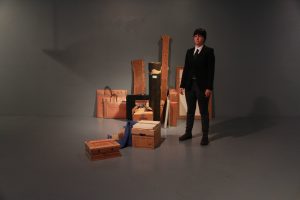
On Guard, performance centering on the installation of long-stored objects from the Bilge Civelekoglu Friedlaender Estate, FiveMyles, Brooklyn, 2014.
Mira Friedlaender is CAA’s Senior Manager of Annual Conference and Programs. Since joining CAA in 2018, Mira has worked with a significant portion of members (new and returning!) and continues to do so each year to support their participation in conference sessions and events. She produces the event with CAA staff, committees, and partners, attending to myriad details while also working to refine and reshape the conference each year in support of CAA’s long-term strategic goals. Mira was previously an exhibition manager for nonprofits such as No Longer Empty and HappyLuckyNo1. She also worked in television production and co-owned a restaurant in Brooklyn, New York.
As an artist and independent scholar of art stewardship, Mira has exhibited locally and internationally, and her work has been featured in the New York Times and Bomb. She has held residencies at the American Center in Bangladesh and Recess in New York. She is the Director of the Bilge Friedlaender Estate, was a fellow in the Art & Law Program, and cocurated Bilge Friedlaender: Words, Numbers, Lines in Istanbul.
“Since her death, I’ve been stewarding the art my mother Bilge Friedlaender (née Civelekoglu) made, beginning more actively in 2014 with my project at Recess, which was still in Soho at that time. I’ve contributed to the scholarship on artist estates through this work and through knowledge sharing; as an artist and artist’s heir I am most interested in performing an emotional institutional critique of the challenges artist-stewards face, particularly those without infinite resources,” explains Mira.
Curated by Işın Önol, Bilge Friedlaender’s never-before-seen works from the 1970s are on view now at Sapar Contemporary in New York City through April 10. Bilge’s work occupies a unique place in the Turkish and Middle Eastern modernist tradition as well as in the history of twentieth-century American art, especially the soulful minimalism of 1970s—not unlike the work of Zarina Hashmi, Etel Adnan, and Huguette Caland. Bilgé’s minimalism is infused with Sufi mysticism, sacred numerology, and reverence for nature and the divine feminine. Her spiritual feminism evolved into an overt ecofeminism as she grew older.
“My mother left Turkey in 1958 to come to the US and be an artist, and she exhibited until her death. Since 2015 there has been a museum show of her work in Istanbul and there have been subsequent opportunities for Bilge’s work, but this is the first time her work has been shown in New York City since 1981. This is a big step for the estate. Next, we are looking to travel this incredible selection of the works on paper and artist books with the goal of expanding the scholarship around Bilge’s artworks and extensive writings.”
Join Mira and curator Işın Önol in conversation with guests on April 4, 6 p.m. ET, at Sapar Contemporary.
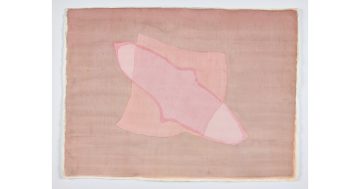
Bilge Friedlaender, Weightless Pink, 1975
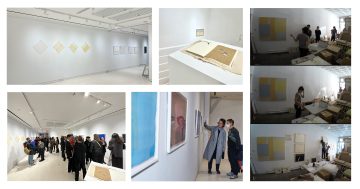
Bilgé: Lifespan of a Horizontal Line, Sapar Contemporary, 2023, and, right column, Half of What’s There, Recess Art, 2014
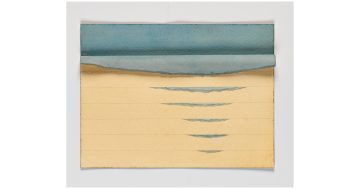
Bilge Friedlaender, Tides Time II, 1975
CWA Picks: Spring 2023
posted by CAA — March 06, 2023
The CAA Committee on Women in the Arts (CWA) Spring Picks focus on exhibitions and literature that explore an interrelatedness of art and science. From the science of future technology to the science of biology, these artists utilize traditional and technological materials in their heterogeneous work.
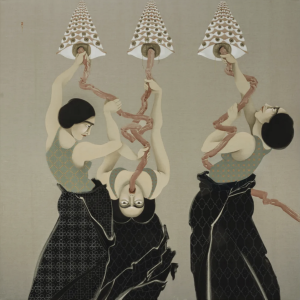
Hayv Kahraman, Eye megaphones, 2023, Oil and torshi on linen, 177.8 x 177.8 x 6.4 cm
Hayv Kahramen, February 6 – March 25
Third Line Gallery, Dubai
Occupying both gallery spaces, Hayv Kahraman presents a series of new paintings and drawings that continue her ongoing scientific research and exploration into the effects of trauma on the body, and the role of the gut in our healing process.
Kahraman’s practice is heavily guided by her refugee experience, where notions of gender and trauma are consistent themes throughout her work. Recently, the artist has directed her research towards neuroscience, human immunology and “neurosculpting” – the ability to restructure the neural pathways in our brain through the gut microbiome – and how they specifically relate to trauma, and our ultimate goal to heal and repair.
Often referred to as the body’s “second brain”, the gut is responsible for our somatic state whereby the bacteria inside our gut regulates the hormones that control our feelings. Kahraman became increasingly fascinated with this theory, and how neurosculpting offers the potential to heal through the process of unlearning and relearning. In this body of work, Kahraman applies this theory alongside her own lived experiences to highlight the puissant connection between the mind and the body. Exposed and tangled digestive organs act as a visual metaphor of unraveling the restorative process.
Delving further into the gut microbiome as a site for recognition and renewal, Kahraman addresses the notion of “otherness” through the medium in which she paints. We have learnt to consider the bacteria and foreign microbes found inside our gut as undesirable, but in fact they are fundamental to our human psyche. By incorporating into her paintings the lilac dye from torshi – fermented beetroot served in Middle Eastern cuisine which is believed to improve mental wellbeing via the gut, and jars of which are on view in the exhibition – Kahraman affirms that the microbial world is verification of our acceptance of difference. Physically painting with torshi – i.e. bacteria – serves as an allegory to how we sentient beings live in symbiosis with the “other”.
Sarah Sze, March 31 – September 10
Solomon R. Guggenheim Museum, NY
Organized by Kyung An, Associate Curator, Asian Art, and was conceived and contributed to by Nancy Spector, former Jennifer and David Stockman Chief Curator.
The Solomon R. Guggenheim Museum will present a solo exhibition of Sarah Sze (b. 1969, Boston) featuring a series of site-specific installations by the acclaimed New York–based artist. Sarah Sze: Timelapse will unravel a trail of discovery through multiple spaces of the iconic Frank Lloyd Wright building, from the exterior of the museum to the sixth level of the rotunda and the adjacent tower level gallery. The exhibition will explore Sze’s ongoing reflection on how our experience of time and place is continuously reshaped in relationship to the constant stream of objects, images, and information in today’s digitally and materially saturated world.
Sze creates across multiple mediums employing painting, sculpture, drawing, printmaking, video, and installation. She is well known for her intricate constructions using a myriad of both fabricated and found objects and images. Whether an intimately scaled sculpture or a large, permanent public commission, her works possess a generative quality—as though in a cycle of growth and decay—and dynamically engage with the spaces they occupy.
In Sze’s reimagination, the Guggenheim’s iconic, UNESCO World Heritage architecture becomes a public timekeeper in a reminder that timelines are built through shared experience and memory. In the words of the artist, “Like the collective efforts used by humans over centuries to communally mark time, to measure and mark it in physical form—ranging from Jantar Mantar, to the Prime Meridian line, to ubiquitous minarets, clock towers, and animated or astronomical clocks around the world—the museum building will become a site to explore the idea of a public clock, and an experiment in collective timekeeping that all in the city can experience.”
Inside the museum, quiet gestures, such as a single pendulum hovering above the fountain on the rotunda floor and a small sculptural installation tucked into an interstitial space in front of the freight elevator, demonstrate Sze’s distinct engagement with unexpected spaces. Visitors will enter an immersive environment: a panoramic sequence of eight bays occupied by a new series of works comprising painting, sculpture, video, drawing, and sound. These will be connected by a river of videos—seen earlier on the building’s street-level facade—which slowly travels up the spiral expanse of the building’s interior, creating a horizon line of moving images. As it travels across, above, and behind the works on view, visitors will be absorbed into a generative experience, continually re-orienting themselves temporally and spatially.
Kopotu Ipikosi (And They Overcame)
Pamela Enyonu, February 28 – March 28
AKKA Projects, Dubai
What is Fear?
Why do we Fear equality?
How does this Fear of achieving equality express itself in and around me?
This artistic essay is an exploration of the phenomenon of fear, and the positions it is experienced from; the instigation of fear and the effects it has on individual bodies and entire communities. What are the elements that create fear, how do the instigators of fear experience it and weaponise fear to curtail autonomy, and how is this activity systemised because it grows in scope and effectiveness; mass hysteria.
The artistic intervention aims to assess whether the effects of fear can be countered or even anticipated and to study the damage fear has on the quality of human expression. Pamela Enyonu was born in 1985 in Kampala, Uganda where she currently lives and works. Pamela studied Art and Design at the Kyambogo University Banda of Kampala, Uganda. Her artistic career started in 2017 with a 3 months residency at 32 degrees East, in Kampala, where she navigated the politics of identity, trauma, and healing. After her residency, she was invited to host a solo exhibition in June 2017. Another artist’s residency in Paris, France, followed in 2020, on the occasion of Africa 2020. In 2022, Enyonu has concluded her residency at AKKA Project in Venice, Italy, also being hosted by ProHelvetia, Zurich, Switzerland, in the same year.
Pamela’s style is inspired by stories, materials, and the process it takes to transform them into works of art. Her works present a tactile and 3-dimensional quality that richly layered textures exploring narratives on gender, identity, empowerment, and self-awareness. Pamela is particularly interested in the “untokenized” experiences occupying the intersection of empowerment, mental health, and identity. She continuously engages with the different communities through collaborations, workshops and seminars. Recently, some of Pamela’s latest works have been acquired by Africa First, and have become part of its private collection of contemporary African art.
Jennifer Chen , February 10 – April 30
Sci Arc, Los Angeles
No Evil imagines a long distant future when, after planetary scaled geoengineering systems have saved earth’s population from climate extinction, planet surviving events have become new creation stories: “machines that once filled the air, sown the seeds, fertilized the ocean, and dimmed the sun have long since been decommissioned.”
Exploring a world that was once on the brink of collapse, “saved only by the forgotten creatures of the past,” Chen is interested in using radical geoengineering processes as a lens through which we can investigate practical responses to climate restoration.
Using 2D and 3D data corrupting techniques to simulate the fading of memories across time and a mixture of analogue techniques including weaving, sewing, welding, and casting, as well as digital fabrication techniques including 3D printing and CNC milling, the exhibition combines decayed digital data and new cultural curiosities to imagine a world where new mythologies are created, giving rise to a new form of craft. Audiences will wander through an abstract forest landscape drawn from this future and encounter fragments of worship, shrines, tapestries, and stories told through film and objects. No Evil invites viewers to consider the forgotten tales, myths, and artifacts that once celebrated and revered these speculative relics of climate resistance as a reminder of what future could await us all if today, we turn a blind eye and cover our ears.
Chen is faculty at SCI-Arc and an architect and designer who works at the intersection of science and fiction, exploring themes of geoengineering, remote sensing, and climate change futures in projects that take the form of buildings, installation, film, and performance. Her new exhibition imagines a long distant future when, after planetary scaled geoengineering systems have saved earth’s population from climate extinction, planet surviving events have become new creation stories.
Tia Keobounpheng , July 22 – October 9
US Bank Gallery, The Minnesota Arts Exhibition Program
A Finnish and Sámi descendent, Keobounpheng uses her artistic practice to recognize her familial connections to both the colonizers and the colonized. “Revealing Threads” will feature her abstract tapestries, influenced by traditional Nordic handwork techniques but infused with contemporary interpretations and symbolism. The results speak to marginalized histories, heritage, and the complexity of personal identity. The works will be informed by a research trip to Sápmi, the traditional land of the Sami people, in fall 2022.
Keobounpheng is a designer/maker and artist living and working in North Minneapolis. She is a recipient of the 2017 and 2020 MN State Arts Board’s Artist Initiative Grant, 2018 McKnight Foundation’s Next Step Fund, and 2022 MN State Arts Board Creative Support for Individuals Grant. Her work has been shown at the American Swedish Institute, in Minneapolis; the Finlandia University Gallery, in Hancock, Michigan; the University of St. Thomas, in St. Paul; and the Anderson Center, in Red Wing, Minnesota. Her laser-cut jewelry has been sold by design retailers across the country for over a decade.
Fran Siegel , January 14 – March 4
Wilding Cran Gallery, Los Angeles
Curated by Jill Moniz
Chronicle features 216 small drawings on paper that Siegel started at the onset of the COVID-19 pandemic. Fran visualized the discourse around the virus as extensions of her focus on pinwheel and maps, as a shorthand of place, and the aesthetics approaching abstraction. Moniz pairs these ephemeral works with Siegel’s painted tapestries that incorporate porcelain as armatures, structural hardware that deciphers colonial appropriation and cultural production.
The exhibition offers multiple entry points into dialogues that magnify how making transforms moments, from staged and beautiful, to essential and abject. Siegel’s works are intimate in scale, reflecting how the pandemic dictated her process and inspired introspective collaging of dreams, news and opportunities, unpacking and reassembling iconography that influences how we interpret and shape our worlds.
In her consideration of patterns and pinwheels, Siegel draws out form, emphasizing how we record our relationship to each other and the landscape, and how intricately and intimately connected we are. Siegel’s pinwheels represent for Moniz a fulcrum of visual language that expands and focuses our attention on both specificity and plurality of experiences that benefit from collective empathy. Chronicle explores Moniz and Siegel’s shared commitment to the depth and complexity of cultural associations foundational to place, and meaning making through art practice.
The Art of Gilah Yelin Hirsch
Literature/publication
curated and edited by Donna Stein
A retrospective survey of the Canadian American artist’s career.
Characterized by a search for meaning, Hirsch’s oeuvre connects psychological, scientific, and philosophical implications of form, bringing together ideas in art, science, ecology, and human consciousness.
The artworks in multiple and mixed media provide an evolving history of Hirsch’s ideas and craft as they illustrate the progression of her original research on the origin of all alphabets. Her elegant theory about five fundamental shapes in nature that reflect forms of neurons and neural processes of perception and cognition as the source of all letterforms in alphabets ancient to modern has gained acceptance in scientific circles. Her evidence shows that while cultures and languages bring unique beauty and richness to the world, we, as humankind, are more alike than different.
Since the 1980s, Hirsch has also been a pioneer in the field of mind/body healing, developing a type of visualization practice that serves as an instrument toward wellness. By organizing seemingly disparate information into a far-reaching scientific theory, Hirsch is recognized internationally for these techniques and has advanced healing practices through the arts.
Archaeology of Metaphor connects the artist’s visual themes to her philosophy and ideas, simultaneously encouraging greater awareness of pattern recognition, social dynamics, and interconnectedness.
Jessi Reaves: All possessive lusts dispelled
The Arts Club of Chicago
Chicago, IL
February 16-May 20
Jessi Reaves combines iconic modernist design with an irreverent aesthetic in sculpture that toys with functionality. Reaves often begins with found furniture, which she dismantles, converts, remakes, enhances, pads, and embellishes in ways that still allow the suggestion of physical contact or use. By breaking things open, she proposes that they be examined visually and in terms of their purpose in life. The exhibition at The Arts Club of Chicago centers on the work Personal Heat, 2021, a deconstructed étagère with accompanying video that explores themes of renovation and rebellion. The sculptural aspect features a pop punk aesthetic of hot pink animal stripes, as if Reaves had been locked in a room in her great aunt’s house with a can of paint, a saw, and some wood glue. The funk and humor of this work and other of Reaves’s sculptures and wall reliefs belie a mastery of complex composition, color, and the ability to integrate disparate materials. Reaves brings to her seemingly off-handed works a range of manual skills that she uses to both humorous and unsettling effect. Jessi Reaves: all possessive lusts dispelled offers a sensuous installation of works that allow the abject to infiltrate the ontology of the object.
The Taxonomy of Peggy Macnamara
March 9–April 28, 2023
Glass Curtain Gallery—Columbia College Chicago
1104 S Wabash Ave, 1st Floor, Chicago, IL 60605
The Taxonomy of Peggy Macnamara features an immense array of artwork that has been created during Macnamara’s tenure as the only artist in residence at the Field Museum. This exhibition focuses on her relationship to observing and working among the collections over decades where practice as an artist, teacher, and collaborator has developed a process of long looking that has created a taxonomy of its own.
Macnamara has traveled across the world, geared with her pencils and watercolors, investigating the fascinating intricacies of nature alongside scientists and peers from the Field Museum. Although her work uses the academic approach of illustrating, her savvy is evident in her loose handling of her art materials to document plants, animals, and related conservation work. Macnamara’s work artfully captures living things (or in some cases—once living), educates us, and sparks interest in the complexities of the natural world.
This exhibition hones in on a tapestry of works that inspire curiosity and deep looking at plants, animals, and the dynamic relationships between them. Macanamara’s attention to detail, and skilled hand at analytically dissecting plants and animals is revealed through the works that leave the stages of the development of a piece visible. We engage with her work for the love of looking, but inevitably discussions about nature, extinction, conservation, and collections permeate its surface. Come take a peek behind the scenes of the Field Museum’s collections through Macnamara’s work, and through special tours accompanying this exhibition.
February 11-June 5th
Art Institute of Chicago
This exhibition brings together nearly 100 rarely seen woodblock prints by Pape, some of which have not been shown publicly since the artist exhibited them in the 1950s and 1960s. Composed of overlapping geometric and linear elements, they at times suggest the clash of atomic particles, rudimentary city plans, or slides of microscopic specimens.
Elia Alba and Postcommodity to Participate in Annual Artists’ Interviews at CAA’s 111th Annual Conference
posted by CAA — January 19, 2023
CAA is pleased to announce that this year’s Annual Artists’ Interviews will feature Elia Alba and Postcommodity!
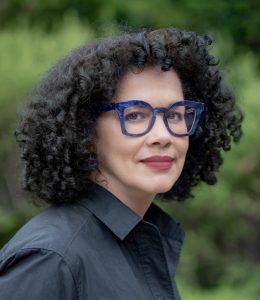
Photo: Michael Palma Mir
Elia Alba was born in Brooklyn to parents who immigrated from the Dominican Republic in the 1950s. She is a multidisciplinary artist whose artistic practice is concerned with the social and political complexity of race, identity, and the collective community. She received her Bachelor of Arts degree from Hunter College in 1994 and completed the Whitney Independent Study Program in 2001. She has exhibited throughout the United States and abroad, including at the Studio Museum in Harlem, El Museo del Barrio, Stedelijk Museum, Amsterdam, Science Museum, London, Smithsonian Museum of Art, National Museum of Art, and Reina Sofía, Madrid. Awards include the Studio Museum in Harlem Artist-in-Residence Program in 1999; Pollock-Krasner Foundation Grant in 2002; Joan Mitchell Foundation Grant in 2002 and 2008; Anonymous Was a Woman Award in 2019; and Latinx Artist Fellowship in 2021. Her work is in the collections of the Smithsonian Museum of Art, El Museo del Barrio, and Lowe Art Museum. Her work has been reviewed in The New York Times, Artforum, ArtNews, and Forbes, among others. Her book, Elia Alba, The Supper Club (2019) brings together artists, scholars, and performers of diasporic cultures through photography, food, and dialogue to examine race and culture in the United States. She was part of the curatorial team for El Museo del Barrio’s critically acclaimed exhibition, Estamos Bien: La Trienal 20/21. She lives and works in the Bronx.
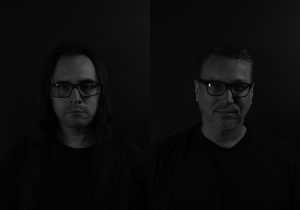
Postcommodity is an interdisciplinary art collective comprised of Cristóbal Martínez (Mestizo), and Kade L. Twist (Cherokee). Postcommodity’s art functions as a shared Indigenous lens and voice to engage the assaultive manifestations of the global market and its supporting institutions, public perceptions, beliefs, and individual actions that comprise the ever-expanding, multinational, multiracial, and multiethnic colonizing force that is defining the twenty-first century through ever-increasing velocities and complex forms of violence. Postcommodity works to forge new metaphors capable of rationalizing our shared experiences within this increasingly challenging contemporary environment; promote a constructive discourse that challenges the social, political, and economic processes that are destabilizing communities and geographies; and connect Indigenous narratives of cultural self-determination with the broader public sphere.
Postcommodity are the recipients of grants from the Joan Mitchell Foundation (2010), Creative Capital (2012), Art Matters (2013), Native Arts and Cultures Foundation (2014), Mid Atlantic Arts Foundation (2017), Ford Foundation Art of Change Fellowship (2017–18), Harker Fund of the San Francisco Foundation (2018–19), Native Arts and Cultures Foundation Shift Award (2021), and Hewlett 50 Arts Commissions (2022). The collective has been exhibited nationally and internationally, including at Contour: 5th Biennial of the Moving Image, Mechelen, Belgium; Nuit Blanche, Toronto; Adelaide International 2012, Adelaide, Australia; 18th Biennale of Sydney, Sydney; Scottsdale Museum of Contemporary Art; 2017 Whitney Biennial; Art in General, New York; documenta 14; 57th Carnegie International, Pittsburgh; Desert X, Coachella Valley, CA; Art Institute of Chicago; LAXART, Los Angeles; Minneapolis Institute of Art; Remai Modern Museum, Saskatoon, Canada. Their historic Land Art installation Repellent Fence occurred at the US/Mexico border near Douglas, Arizona and Agua Prieta, Sonora, Mexico. The collective was awarded the Fine Prize for From Smoke and Tangled Waters, They Carried Fire Home, commissioned for the 57th Carnegie International.
Postcommodity acknowledges the important contributions of its previous collaborators: Steven Yazzie (2007–2010), Nathan Young (2007–2015), Raven Chacon (2009–2018), Adam Ingram-Goble (Game Remains), Andrew McCord (If History Moves at the Speed of Its Weapons, Then the Shape of the Arrow is Changing, and Promoting a More Just, Verdant and Harmonious Resolution), Annabel Wong (Dead River) and Existence AD (Dead River).
CAA’s Annual Artist Interviews will be held on Friday, February 17, 4:30–7 p.m. ET, in Grand Ballroom East.
The 111th CAA Annual Conference will be held February 15–18, 2023 at the New York Hilton Midtown. Register now!
CAA 110th Annual Business Meeting Minutes
posted by CAA — December 16, 2022
CAA Annual Business Meeting Minutes
Friday, February 18, 2022
- Welcome + Call to Order – N. Elizabeth Schlatter, CAA President
- N. Elizabeth Schlatter called the meeting to order at 1:05 p.m. CT.
- Land acknowledgements.
- Thanks paid to staff for their hard work bringing the 2022 Annual Conference to fruition.
- Executive Director’s Report – Meme Omogbai, CAA Executive Director + CEO
- Meme Omogbai welcomed everyone to the 110th Annual Business Meeting and expressed regrets that this could not be an in-person convening as the pandemic necessitated a pivot to virtual meeting.
- CAA staff remains focused on meeting commitments to members, based on quantitative and qualitative analysis, surveys and other feedbacks consistent with the fundamentals of our strategic repositioning plan.
- CAA’s aim for the 2022 Annual Conference was to create a smaller, more digestible program of 200 vetted and guaranteed sessions in two components, in-person in February and virtual in March, based upon membership feedback.
- Throughout the pandemic, the health and safety of members has been CAA’s primary concern. Based on the information and the feedback received from members, specifically concerns about an in-person convening, and close monitoring of the COVID pandemic and omicron strain as well as CDC guidelines, it was decided that the CAA 2022 Annual Conference would pivot to an entirely virtual format while also maintaining the scheduled dates: February 16-19 and March 3-5, with all recordings available through April 14.
- It is important to note that during the decision-making process, while the Hilton Chicago remained open, CAA 2022 registration statistics were drastically below what was needed to fulfill the negotiated room block contractual obligations and registration goals.
- The pivot to virtual has provided increased access to virtual content, allowing conference attendance to expand and embrace a global audience. In this flexible and accessible format, individuals can hear session content on their own schedule between teaching, family care, and other obligations, including acknowledgement of the climate crisis.
- Pricing was also adjusted for virtual access. Everyone registered for all access/in-person was automatically converted to virtual from a rate of $249 to $199 and directed back to portal for self-service options: 1) credit $50 to the next membership renewal; 2) $50 tax deductible donation to CAA; or 3) refund of $50.
- This year’s pivot exemplifies our model of constant learning and improvement where we adjust our plans based on feedback and data received. This is just the beginning; as we continue with our repositioning, we will be able to improve our responsiveness and agility in the process of supporting CAA members.
- Approval of Minutes of 109th Annual Business Meeting [ACTION ITEM]
- Jennifer Rissler, CAA VP for External Relations, moved to approve the 109th Annual Business Meeting minutes. Niku Kashef, CAA VP for Diversity & Inclusion, seconded the motion.
- 81% of attendees (25 people) voted to approve; 19% of attendees (6 people) abstained. The minutes were approved.
- Financial Report – Georgia Harrell, CAA Treasurer + Robert Tofolo, CAA Head of Operations
-
- As of June 30, 2021, the association posted a breakeven operating budget with revenue including investment spinoff matching expenses and meeting our forecasts and budget expectations. The association continues to manage expenses within revenue means. Operating revenue totaled $3,001,778 verses prior year $3,321,000.
- Excerpts of the audited financial statements for fiscal year 2021 will be posted on the Association’s website. Complete audited financial statements have been provided and made available via guidestar.org and charitiesnys.com.
- In March of 2021, the association received a second payroll protection loan of $352,195 as part of the national CARES Act. This loan was fully forgiven in February 2022.
- As of June 30, 2021, there were 6,095 individual members down 9% from 6,699 prior year; this is reflective of continued systemic and pandemic impacts. There were also 367 institutional members versus prior year numbers of 443.
- The market value of the association’s investment portfolio as of June 30 was $11,946,566 versus a prior year balance of 9,825,458 million. The portfolio continues to be managed by investment managers at Boston Trust, now named Boston Trust Walden Company, under the supervision of the finance committee of the CAA Board of Directors.Georgia Harrell presented the financial report for the fiscal year ending June 30, 2021.
- Robert Tofolo presented an update on conference attendance and CAA’s strategic plan.
- As of today, February 18, 2022, 2038 attendees have registered for the 2022 conference. We will provide a final tally for attendance after March 5, 2022.
- In 2020, CAA implemented a five-year strategic plan to create a sustainable business model that can support operations and allow for endowment growth through responsible and streamlined operations. Although we are now operating within our means, we know that membership dues no longer support the operations of the association: combined revenues of dues, Annual Conference, and publications in fiscal 2021 only covered 63% of our operating expenses.
- In response to this, we are working to redesign our membership tiers in order to provide an accessible entry point to CAA.
- In November 2021 we introduced a new user portal which will function as a central nervous system for the member experience, enabling a unique “myCAA” experience tailored to each individual’s member journey.
-
- Old/New Business
- No old/new business was raised.
- Board Member Election Results – N. Elizabeth Schlatter, CAA President
- Gregory Gilbert, Nazar Kozak, Karen Leader, and Adity Saxena were elected to serve a four-year term on the Board of Directors, beginning in May 2022.
- Victoria McCraven was elected as an Emerging Professional Board member and will serve a two-year term.
- Adjourn
Respectfully submitted by Maeghan Donohue, CAA Manager of Strategic Planning, Diversity, and Governance.
CAA 50th Anniversary of Feminism + Art
posted by CAA — September 19, 2022
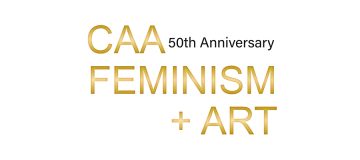
CAA has engaged in a yearlong 50th anniversary celebration of feminism and art, culminating in a program and reception at Boston University’s Joan and Edgar Booth Theatre at 4 p.m. ET on Friday, September 23, 2022. This program will reflect on the incredible history of feminist pioneers at the organization while looking toward a more inclusive, equitable future. Along with the Women’s Caucus for Art and The Feminist Art Project, CAA is committed to ensuring our crucial work continues during this moment of precarity for women’s rights.
To expand national and global reach, CAA is partnering with ArtTable, along with Women & Their Work (Austin, TX) and Pen + Brush (NYC) who will serve as satellite locations for the 90-minute Boston program. We hope to introduce a new generation to the intersection of art and feminism at CAA and beyond.
To RSVP for the Boston program and reception, please contact development@collegeart.org.
To RSVP for the livestream of the Boston program, please visit caafeminism50.eventbrite.co.uk.
If you are unable to attend but would like to contribute to the 50th Anniversary of Feminism Honorary Fund to ensure this vital work continues at CAA, please visit collegeart.org/donate.
HOSTS
Meme Omogbai, CAA Executive Director & CEO
Jennifer Rissler, CAA President
CAA Board of Directors
HONORARY COMMITTEE
Lynne D. Allen
Laura Anderson Barbata
Charlene Villaseñor Black
Judith K. Brodsky
Scherezade García-Vázquez
Joanna Gardner-Hugget
Laura Hall
Ann Sutherland Harris
Margo Hobbs
Donna Jackson
Denali Kemper
Leslie King-Hammond
Laura Morrison
Denise Mullen
Ferris Olin
N. Elizabeth Schlatter
Lowery Stokes Sims
Anne Swartz
Connie Tell
Freida High Wasikhongo Tesfagiorgis
Susan Unterberg
PARTNERS
ArtTable
The Feminist Art Project
Pen + Brush
Women & Their Work
Women’s Caucus for Art
Women’s History Month and Art Journal Open
posted by CAA — March 21, 2022
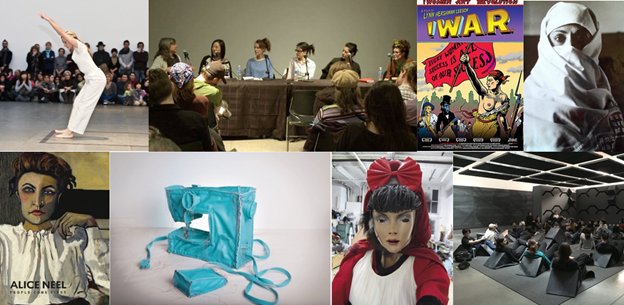
Each week this Women’s History Month, we highlight the rich scholarship and programs produced at CAA that celebrate women in the fields of visual arts and the humanities. This week, we are sharing a bibliography of articles from our open-access journal Art Journal Open that feature women artists.
This Women’s History Month is also especially significant this year, which is the 50th anniversary of feminism at CAA. To learn more about this history, visit this page. CAA is also collecting archival materials to better understand and document the history of its Committee of Women in the Arts, including the committee’s many collaborations with other affiliate committees and groups, such as the Women’s Caucus for Art, The Feminist Art Project, the Queer Caucus, and many more. Visit this page for more information.
 |
Andrew, Nell. “DadaDance: Sophie Taueber’s Visceral Abstraction.” Art Journal Open (July 3, 2014).
Sophie Taueber-Arp, Free Vertical-Horizontal Rhythms (Rythmes verticaux-horizontaux libres), 1919, gouache, 11 15⁄16 x 8 9⁄16 in. (30.3 x 21.8 cm). Stiftung Hans Arp und Sophie Taeuber Arp e.V., inv. 003.205 (artwork in the public domain; photograph provided by Stiftung Hans Arp und Sophie Taeuber Arp) |
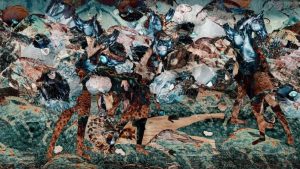 |
Barakeh, Zeina. “Projections for the Third Half [Cloud Storm].” Art Journal Open (August 6, 2020).
Zeina Barakeh, Projections From The Third Half [Cloud Storm], 2020, animation, 3 min. (artwork © Zeina Barakeh) |
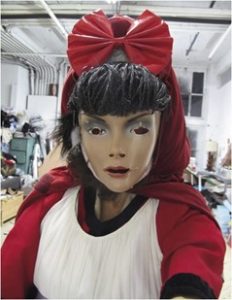 |
Barber, Tiffany E. “Narcissister, a Truly Kinky Artist.” Art Journal Open (March 11, 2020).
Narcissister, Red Riding Hood, 2014, mixed media (photograph provided by the artist) |
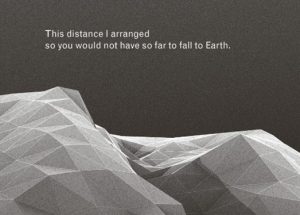 |
Berrigan, Caitlin and Sasha Engelmann. “Fault Lines and Fractures: A Conversation about Imaginary Explosions.” Art Journal Open (December 17, 2020).
Caitlin Berrigan, excerpt from Imaginary Explosions, 2018 |
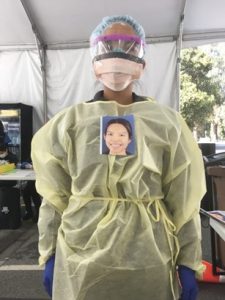 |
Bryan-Wilson, Julia and Mary Beth Heffernan. “Facing Social Practice: Mary Beth Heffernan in conversation with Julia Bryan-Wilson.” Art Journal Open (June 30, 2020).
Stanford Express Care nurse Anna Chico, who was among the first providers to use PPE Portraits for COVID-19 care, March 2020 (photograph by Cati Brown-Johnson) |
 |
Burns, A.K. and Melissa Ragain. “Scripting A Smeary Spot.” Art Journal Open (December 8, 2017).
The late Jack Doroshow performs as Mother Flawless, a clairvoyant psyche. In this scene she recites an excerpt from Joanna Russ’ sci-fi novel We Who Are About To. . . , A.K. Burns, video still from A Smeary Spot, 2015, four-channel video installation, HD color, six-channel sound, TRT 53:13 (artwork © A.K. Burns; image provided by the artist, Callicoon Fine Arts, NY, and Michel Rein Gallery, Paris/Brussels) |
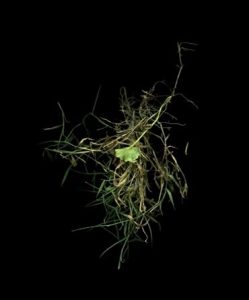 |
Cancelmo, Amy. “Roots and Ramble Kija Lucas and Amy Cancelmo in Conversation.” Art Journal Open (August 30, 2016).
Kija Lucas, Bristol 30, 2013, archival pigment print, 20 x 24 in. (50.8 x 60.9 cm), from In Search of Home, (artwork © Kija Lucas) |
 |
Carland, Tammy Rae and Ann Cvetkovich. “Sharing an Archive of Feelings: A Conversation.” Art Journal Open (October 24, 2013).
Tammy Rae Carland, Galz Living Room, MWMF, from Outpost, 2004, color photograph, 20 x 24 in. (50.8 x 61cm) (artwork © Tammy Rae Carland) |
 |
Costello, Kate. “P&P .” Art Journal Open (November 3, 2016).
Still from Kate Costello, P&P, 2016, video, 1 min., 26 sec. (artwork © Kate Costello) |
 |
Craycroft, Anna. “To Listen.” Art Journal Open (October 25, 2017).
Sophomore Seminar with Meg Cranston and Marlena Donohue, April 5, 2017: Meg Cranston and Marlena Donohue’s class met with Anna Craycroft to discuss Tuning the Room in relation to Umberto Eco’s essay “The Open Work.” (artwork © Anna Craycroft) |
 |
Craycroft, Anna. “To Record, to Interpret, to Comment.” Art Journal Open (March 1, 2017).
Anna Craycroft, The Earth Is a Magnet, 2016, installation view, part of The Artist’s Museum, Institute of Contemporary Art Boston, November 16, 2016–March 26, 2017 (artwork © Anna Craycroft; photograph by Charles Mayer) |
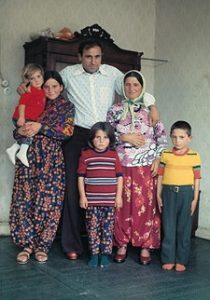 |
DaPonte, Amy A. “Candida Höfer’s Turken in Deutschland as ‘Counter-publicity’.” Art Journal Open (January 6, 2017).
Candida Höfer, Untitled from Türken in Deutschland 1979, 1979, color slide projection, 80 slides, approx. 7 min., dimensions variable (artwork © Candida Höfer, Köln/VG Bild-Kunst, Bonn 2016) |
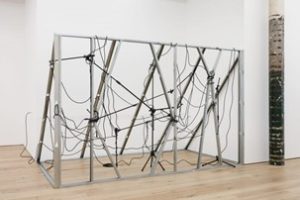 |
Fuenmayor, Jesús. “Barricades of Silence: Nikita Gale in Conversation with Jesús Fuenmayor.” Art Journal Open (August 20, 2020).
Nikita Gale, INTERCEPTOR, 2019, installation view, Fall Apart: Nikita Gale & Pat O’Neill, Martos Gallery, New York, January 11–February 24, 2019 (artwork © Nikita Gale; photograph by Charles Benton/Martos Gallery, provided by the artist) |
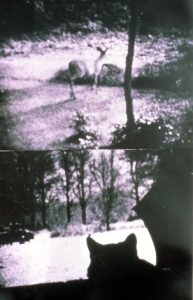 |
Goodeve, Thyrza Nichols. “The Cat is My Medium: Notes on Writing and Art of Carloee Schneemann.” Art Journal Open (July 29, 2015).
Carolee Schneemann, Kitch’s Last Meal, 1973–76, Super 8mm film, double projection, vertical, sound on cassette, ca. 5 hrs., two installation views (artwork © Carolee Schneemann; photographs provided by the artist) |
 |
Goulish, Matthew. “A Clear Day and No Memories: Neurology, Philosophy, and Analogy in Kerry Tribe’s HM.” Art Journal Open (February 5, 2014).
Eadward Muybridge, Pi-Wi-Ack, Valley of the Yosemite (Shower of Stars), “Vernal Fall,” 400 Feet Fall, No. 29, 1872, wet-plate collodion photograph (photograph in the public domain) |
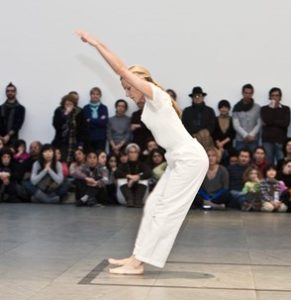 |
Graham, Amanda Jane. “Space Travels: Trisha Brown’s Locus.” Art Journal Open (July 22, 2016).
Trisha Brown, Locus Solo, 2011, performed by Diane Madden in “Performance 11: OnLine/Trisha Brown Dance Company” in conjunction with the exhibition On Line: Drawing through the Twentieth Century, Museum of Modern Art, New York, January 2011 (photographs © Yi-Chun Wu; photographs provided by Museum of Modern Art/Licensed by SCALA/Art Resource, NY) |
 |
Jenkinson, Monique. “Diva Maw.” Art Journal Open (October 29, 2020).
Monique Jenkinson (Fauxnique), Diva Maw, 2020, digital video, 5:35 min.; soundtrack by Marc Kate, Untitled (“Diva Maw” Soundtrack), 2020, audio file (video © Monique Jenkinson; soundtrack © Marc Kate) |
 |
Kauffman, Vanessa. “Outside of Time: Patricia Fernández Carcedo in Conversation with Vanessa Kauffman.” Art Journal Open (August 12, 2016).
Visitors in Patricia Fernández Carcedo’s studio during Headlands’ Fall 2015 Open House (artwork © Patricia Fernández Carcedo; photograph by Rebecca Puretz, provided by Headlands Center for the Arts) |
 |
Laser, Liz Magic and Christopher Y. Lew. “InterAct: a reenacted interview.” Art Journal Open (May 4, 2011)
Liz Magic Laser, Flight, 2010, performance, MoMA PS1, Long Island City, April 10, 2010 (artwork © Liz Magic Laser; photograph by Mia Tramz, provided by Derek Eller Gallery). The performance was developed in collaboration with actors Lindsey Andersen, Nic Grelli, Elizabeth Hodur, Michael Wiener, Max Woertendyke, and Lia Woertendyke |
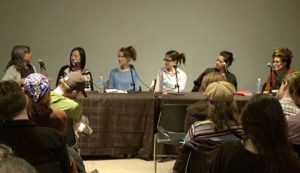 |
Lee, Young Jean. “Women in Downtown Theater.” Art Journal Open (August 26, 2012). |
 |
Leeson, Lynn Hershman. “Excerpts from the Graphic Novel !Women Art Revolution—A Secret History.” Art Journal Open (May 29, 2011) |
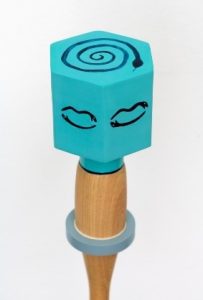 |
Mann, Elana. “One day I will make a mace, but for now I have a mouth.” Art Journal Open (September 30, 2021).
Elana Mann, Unidentified Bright Object #61, 2021, clay, wood, and glass, 14 ½ x 3 ½ x 3 ¾ in. (36.8 x 8.9 x 9.5 cm) (artwork © Elana Mann; photographs by Brica Wilcox) |
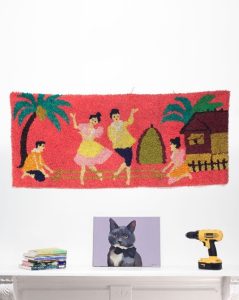 |
Masley-Charlet, Caitlin. “Caitlin Masley-Charlet in Conversation with Elisabeth Smolarz.” Art Journal Open (June 5, 2018).
Elisabeth Smolarz, ENCYCLOPEDIA OF THINGS, ongoing 2014–2017. Archival inkjet prints, dimensions variable. Courtesy of the artist. |
 |
Masley-Charlet, Caitlin. “Caitlin Masley-Charlet and Diana Shpungin in Conversation.” Art Journal Open (July 8, 2016).
Diana Shpungin, detail of A Break in One and Several Places, 2015, graphite pencil, horsehair broom, glazed porcelain and stoneware, 24 x 43 x 14 in. (60.9 x 109.2 x 35.5 cm) (artwork © Diana Shpungin) |
 |
McKee, C.C. “‘a salting of sorts’: Salt, Sea, and Affective Form in the work of Deborah Jack.” Art Journal Open (July 30, 2019).
Deborah Jack, SHORE, 2004, nylon screens, video projection, rock salt, reflecting pool, dimensions variable, installation view, Big Orbit Gallery, Buffalo, New York (artwork © Deborah Jack; photograph provided by the artist) |
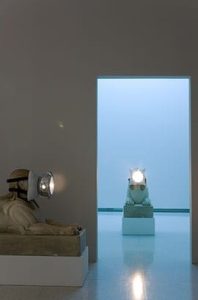 |
McClure, Michael Jay. “If it Need Be Termed Surrender: Trisha Donnelly’s Subjunctive Case.” Art Journal Open (July 29, 2013).
Trisha Donnelly, Untitled, 2008, plaster, horsehair, paint, pillow, belts, lamp, two parts, ea. 36 x 60 x 22¾ in. (91.4 x 152.4 x 57.8 cm), installation view, The Quick and the Dead, Walker Art Center, 2009 (artwork © Trisha Donnelly; photograph provided by Casey Kaplan, New York) |
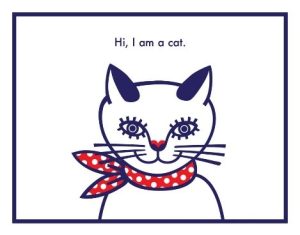 |
Ohsawa, Asuka. “Squares, Triangles, and Cats.” Art Journal Open (December 31, 2020). |
 |
Porges, Maria. “Shortest Stories.” Art Journal Open (December 20, 2018). |
 |
Rosa, María Laura. “Questions of Identity: Photographic Series by Alicia D’Amico, 1983–86.” Art Journal Open (July 2, 2019).
Alicia D’Amico photograph of Liliana, a performance by Liliana Mizrahi, 1983, scanned copy of original negative, reproduction from original 35mm negative contact (photograph © Archivo Alicia D’Amico, Buenos Aires) |
 |
Santos, Dorothy R. “ Domain Errors.” Art Journal Open (July 24, 2020). |
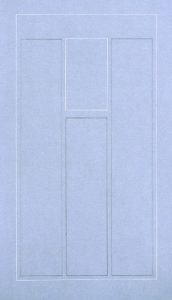 |
Schiff, Karen L. “Imprinting Agnes Martin.” Art Journal Open (December 19, 2014).
Karen L. Schiff, Agnes Martin, El País, 21 December 2004, II, 2005, graphite and stylus on vellum, 17 x 12 inches (artwork © Karen L. Schiff) |
 |
Sifuentes, Aram Han. “Official Unofficial Voting Station: Voting for All Who Legally Can’t.” Art Journal Open (October 1, 2020).
Protest Banner Lending Library, Let Us Vote! and Official Unofficial Voting Station, 2020, textile banners (photograph by Thaib A. Wahab) |
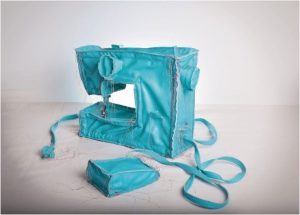 |
Szymanek, Angelique. “Haptic Encounters: Margarita Cabera’s Space in Between.” Art Journal Open (October 15, 2020).
Margarita Cabrera, Sewing Machine (Blue-Green), 2016, vinyl, thread, copper wire, and appliance parts (artwork © 2020 Margarita Cabrera/Licensed by VAGA at Artists Rights Society [ARS], NY; photograph provided by the artist) |
 |
Vlassopoulou, Penelope. “No water, Athens, Greece, 2015: Twenty-four hours with nothing to eat or drink, only smelling the jasmine.” Art Journal Open (October 26, 2016).
Excerpt from Pandelis Prevelakis, I Kefali tis Medousas [The Head of Medusa] (Athens: Friends’ Editions, 1963), trans. the artist and Markus Nystrom |
 |
Watt, Marie. “In Conversation with Marie Watt: A New Coyote Tale.” Art Journal Open (October 19, 2017).
Marie Watt, Blanket Stories: Transportation Object, Generous Ones, Trek, 2014, cast bronze, 18 x 4 x 6 ft. (5.49 x 1.22 x 1.83 m). Permanent installation, Tacoma Art Museum, Tacoma, Washington (artwork © Marie Watt; photograph by Benjamin Benschneider/OTTO) |
 |
Wilson, Siona. “Portraits (and) Matter.” Art Journal Open (January 13, 2022). |
 |
Yoshitake, Mika. “Humans have been Human for so long: Shana Lutker and Mika Yoshitake in Conversation.” Art Journal Open (August 2, 2016).
Shana Lutker, A handsome confused puppet, 2015, mirrored glass box, fluorescent lights, wood, marble, casters, 49 x 30 x 19 in. (124.4 x 76.2 x 48.2 cm) (artwork © Shana Lutker; photograph by Cathy Carver) |
 |
Yurshansky, Jenny. “Hide and Seek.” Art Journal Open (March 25, 2021).
Jenny Yurshansky, Hide and Seek (folded view), 2021, interactive sculpture, inkjet print, 3 3/4 x 3 3/4 x 3 in. (9.5 x 9.5 x 7.6 cm) (photograph provided by the artist) Folk tradition meets revisionist storytelling in Jenny Yurshansky’s printable sculpture |
Announcing New CAA Board Members for 2022!
posted by CAA — March 08, 2022
The results of the 2022 CAA Board of Directors Election were presented at the CAA Annual Business Meeting, Part II on Friday, February 18 at 2:00 p.m. (CST) at CAA’s 110th Annual Conference.
We are grateful to all the candidates who put forward their names for consideration this year.
ABOUT THE BOARD OF DIRECTORS
The Board of Directors is charged with CAA’s long-term financial stability and strategic direction; it is also the Association’s governing body. The board sets policy regarding all aspects of CAA’s activities, including publishing, the Annual Conference, awards and fellowships, advocacy, and committee procedures.
Thank you to all those who voted!
We would like to congratulate Gregory Gilbert, Nazar Kozak, Karen J. Leader, Adity Saxena, and Victoria McCraven on their election to CAA’s Board of Directors.
Gregory Gilbert
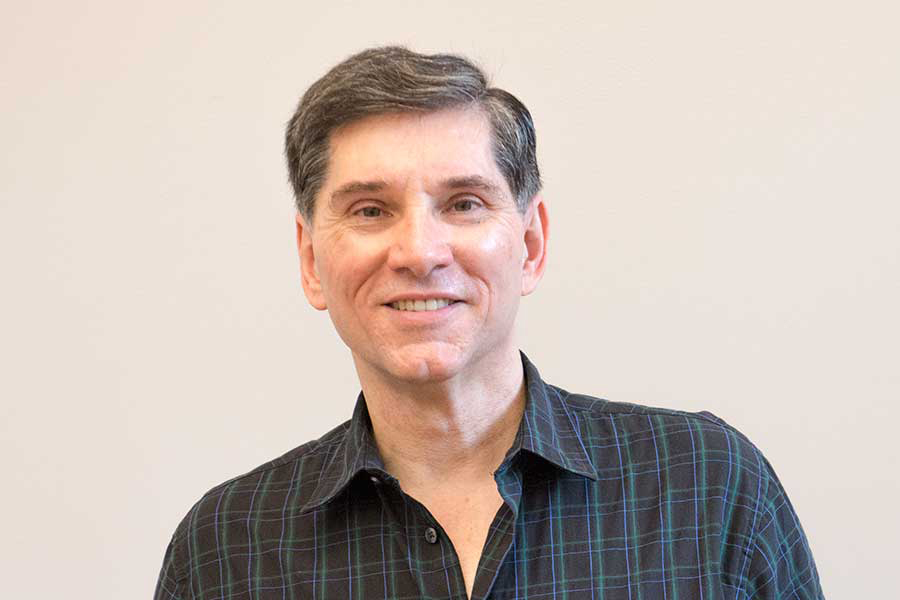 Gregory Gilbert received his BFA degree in Art History from the University of Kansas and his MA and PhD degrees in Art History from Rutgers University. He has taught at Rutgers University, Purdue University and Western Illinois University. He is currently Professor of Art History and Director of the Art History and Art Museum Studies programs at Knox College in Galesburg, Illinois. He also earned MA certification in Museum Studies from Rutgers University and has worked in several art museums, most recently as senior curator at the Figge Art Museum in Davenport, Iowa. His primary area of research is 20th century American art, specifically Abstract Expressionism. He is currently researching the relationship of Robert Motherwell’s art to Pragmatist philosophy and American poetics and in 2015 received a Dedalus Foundation Visiting Scholar at the Archives of American Art Fellowship for this project. He is also writing a book on Abstract Expressionism and the mass visual culture of World War II and has published articles in the Oxford Art Journal and Arts on this topic. In addition, he has written critical exhibition and book reviews for The Art Newspaper.
Gregory Gilbert received his BFA degree in Art History from the University of Kansas and his MA and PhD degrees in Art History from Rutgers University. He has taught at Rutgers University, Purdue University and Western Illinois University. He is currently Professor of Art History and Director of the Art History and Art Museum Studies programs at Knox College in Galesburg, Illinois. He also earned MA certification in Museum Studies from Rutgers University and has worked in several art museums, most recently as senior curator at the Figge Art Museum in Davenport, Iowa. His primary area of research is 20th century American art, specifically Abstract Expressionism. He is currently researching the relationship of Robert Motherwell’s art to Pragmatist philosophy and American poetics and in 2015 received a Dedalus Foundation Visiting Scholar at the Archives of American Art Fellowship for this project. He is also writing a book on Abstract Expressionism and the mass visual culture of World War II and has published articles in the Oxford Art Journal and Arts on this topic. In addition, he has written critical exhibition and book reviews for The Art Newspaper.
Nazar Kozak
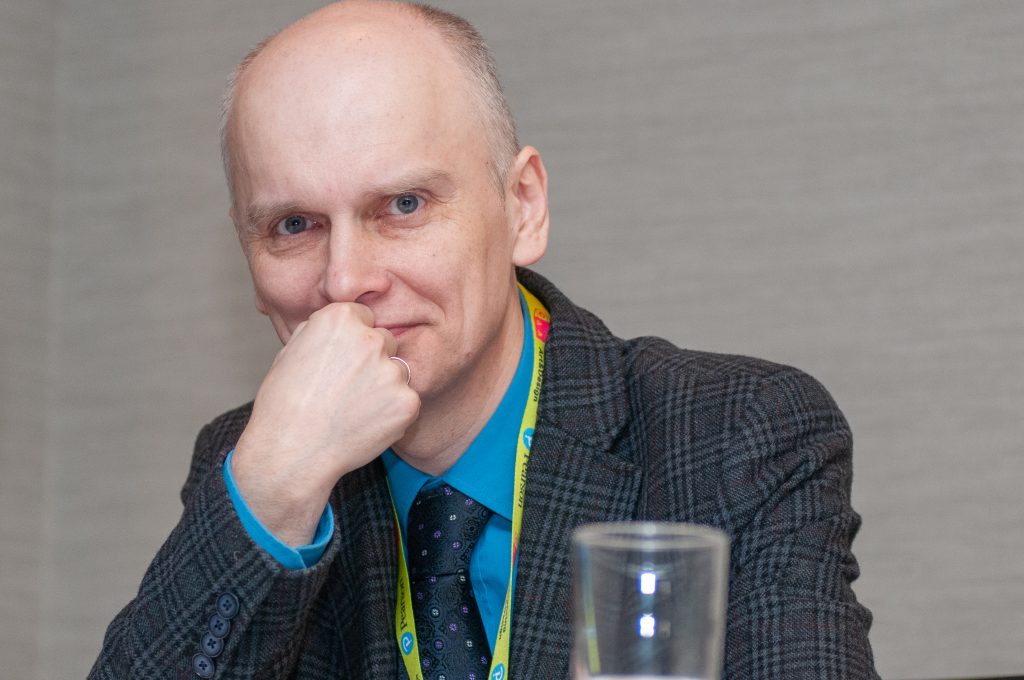 Nazar Kozak is Senior Researcher at the Department of Art Studies at the Ethnology Institute of the National Academy of Sciences, Ukraine and Associate Professor of Art History at Ivan Franko University of Lviv. Kozak received a PhD from Lviv Academy of Arts in 2000. His research was supported by scholarships and grants from the Fulbright Scholar Program, Getty Scholar Program, the American Council of Learned Societies, and other organizations. Kozak is working in two subfields of art history simultaneously: medieval and contemporary. His research on the medieval period concerns political iconography and art exchanges in Byzantine and post-Byzantine cultural spheres. He has authored the book (Lviv: Liha-Pres, 2007). In contemporary art studies, Kozak is exploring art’s agency in crisis situations. His essay on the art interventions during the Maidan Revolution in Ukraine (2013–14) received an honorable mention as a finalist for 2018 Art Journal Award. Currently, Kozak is writing a book about global artistic responses to the 1986 Chernobyl nuclear disaster.
Nazar Kozak is Senior Researcher at the Department of Art Studies at the Ethnology Institute of the National Academy of Sciences, Ukraine and Associate Professor of Art History at Ivan Franko University of Lviv. Kozak received a PhD from Lviv Academy of Arts in 2000. His research was supported by scholarships and grants from the Fulbright Scholar Program, Getty Scholar Program, the American Council of Learned Societies, and other organizations. Kozak is working in two subfields of art history simultaneously: medieval and contemporary. His research on the medieval period concerns political iconography and art exchanges in Byzantine and post-Byzantine cultural spheres. He has authored the book (Lviv: Liha-Pres, 2007). In contemporary art studies, Kozak is exploring art’s agency in crisis situations. His essay on the art interventions during the Maidan Revolution in Ukraine (2013–14) received an honorable mention as a finalist for 2018 Art Journal Award. Currently, Kozak is writing a book about global artistic responses to the 1986 Chernobyl nuclear disaster.
Karen J. Leader
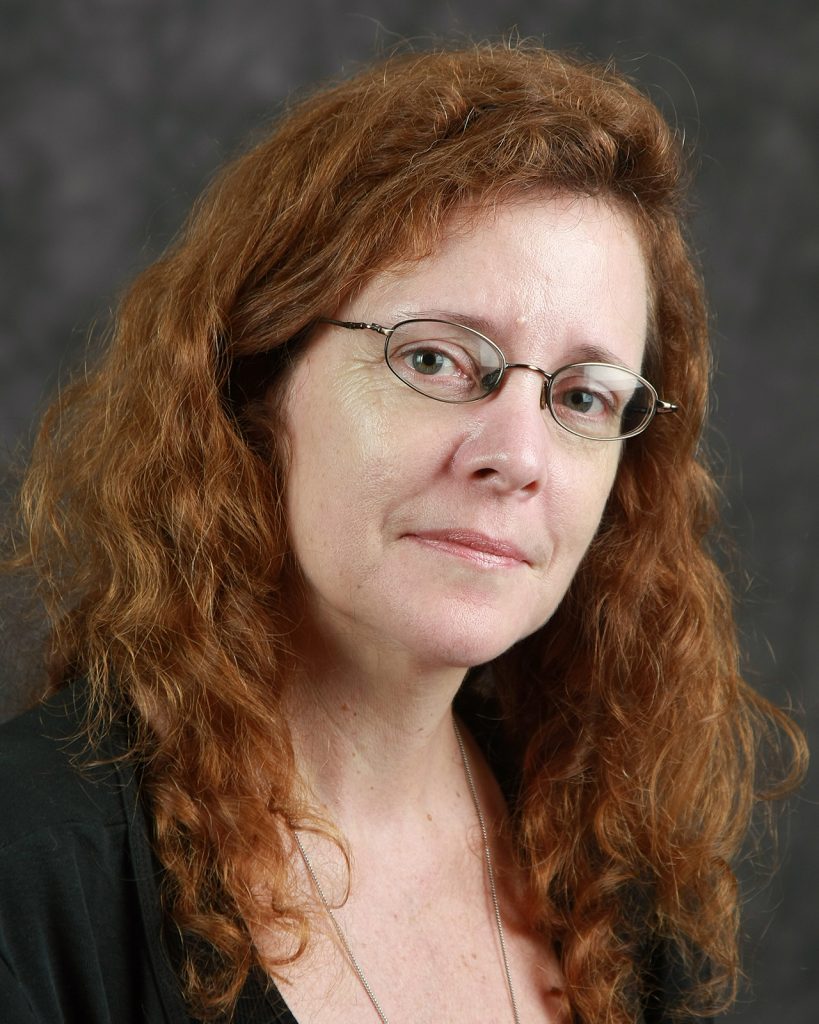 Karen J. Leader is Associate Professor of Art History and Faculty Associate in the Center for Women, Gender and Sexuality Studies at Florida Atlantic University. She received her BA from the University of California, Berkeley and her MA and Ph.D. at the Institute of Fine Arts, New York University. Her areas of interest include art and popular culture in the 19th-21st centuries, feminist theory and practice, and the history and future of the discipline of art history, the humanities, and higher education. She has published on the artist Gustave Courbet, representations of women in popular culture, and 21st-century tattoo culture. She directs the Barb Schmidt Fellowship: Cultivating Community Involvement, Advocacy and Social Change, and is currently the chair of CAA’s Services to Historians of the Visual Arts Committee.
Karen J. Leader is Associate Professor of Art History and Faculty Associate in the Center for Women, Gender and Sexuality Studies at Florida Atlantic University. She received her BA from the University of California, Berkeley and her MA and Ph.D. at the Institute of Fine Arts, New York University. Her areas of interest include art and popular culture in the 19th-21st centuries, feminist theory and practice, and the history and future of the discipline of art history, the humanities, and higher education. She has published on the artist Gustave Courbet, representations of women in popular culture, and 21st-century tattoo culture. She directs the Barb Schmidt Fellowship: Cultivating Community Involvement, Advocacy and Social Change, and is currently the chair of CAA’s Services to Historians of the Visual Arts Committee.
Victoria McCraven
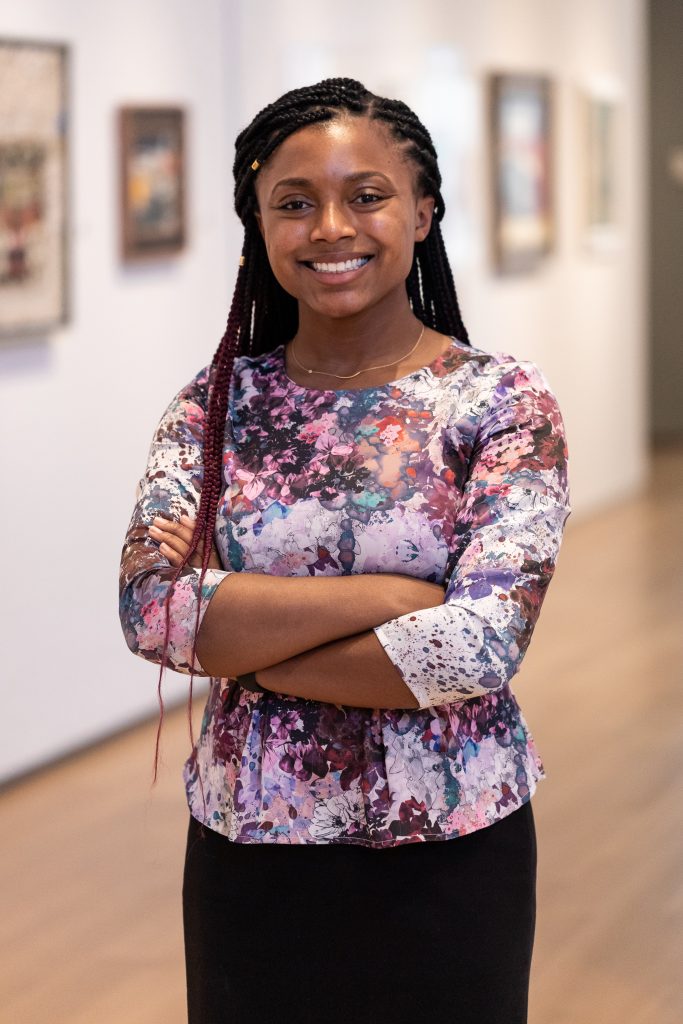 Victoria McCraven is the Programs Manager at NXTHVN, where she recently co-curated the Fall Exhibition Christian Curiel: Between Reveries. Based in New Haven, Connecticut, NXTHVN is an arts non-profit which invites emerging artists from all over the world to participate in its curatorial and studio fellowships. She is passionate about expanding historical narratives through the visual arts and creating community-based dialogue. Victoria earned her bachelor’s degree from Dartmouth College, majoring in Geography with a minor in Art History. While at Dartmouth, she worked at the Hood Museum of Art where she curated the exhibition Black Bodies on the Cross which included works by Romare Bearden, Kara Walker, and Ashley Bryan. In 2019, Victoria was selected as a U.S.-U.K. Fulbright Postgraduate Grantee to complete her master’s degree in History of Art at the School of Oriental and African Studies, University of London. Previously, Victoria was the 2020-2021 Romare Bearden Graduate Museum Fellow at the Saint Louis Art Museum, where she worked on education and audience development projects across the museum. While completing her fellowship at the Saint Louis Art Museum, she co-curated the current New Media Series Nuotama Frances Bodomo: Afronauts which is currently on view through May 1, 2022.
Victoria McCraven is the Programs Manager at NXTHVN, where she recently co-curated the Fall Exhibition Christian Curiel: Between Reveries. Based in New Haven, Connecticut, NXTHVN is an arts non-profit which invites emerging artists from all over the world to participate in its curatorial and studio fellowships. She is passionate about expanding historical narratives through the visual arts and creating community-based dialogue. Victoria earned her bachelor’s degree from Dartmouth College, majoring in Geography with a minor in Art History. While at Dartmouth, she worked at the Hood Museum of Art where she curated the exhibition Black Bodies on the Cross which included works by Romare Bearden, Kara Walker, and Ashley Bryan. In 2019, Victoria was selected as a U.S.-U.K. Fulbright Postgraduate Grantee to complete her master’s degree in History of Art at the School of Oriental and African Studies, University of London. Previously, Victoria was the 2020-2021 Romare Bearden Graduate Museum Fellow at the Saint Louis Art Museum, where she worked on education and audience development projects across the museum. While completing her fellowship at the Saint Louis Art Museum, she co-curated the current New Media Series Nuotama Frances Bodomo: Afronauts which is currently on view through May 1, 2022.
Adity Saxena
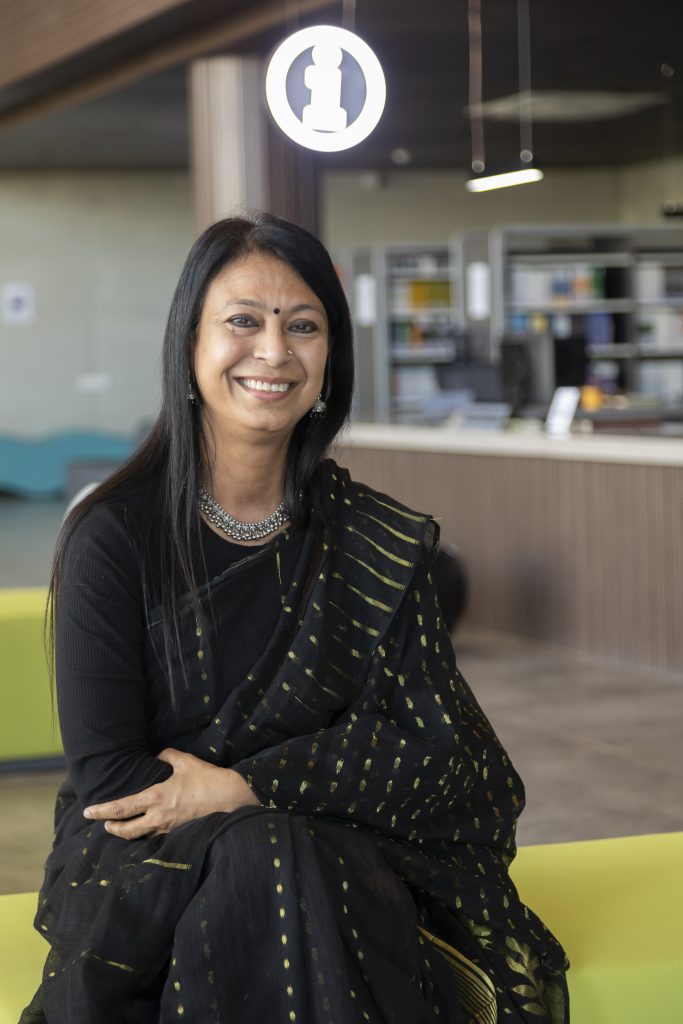
I call myself a messenger of happiness and believe in empathy. Mind-map is my tool for plotting ideas and communicating through stories. In the past 18 years of my professional journey, I have progressed from a design educator of a vocational training institution to a Dean of the Woxsen School of Arts and Design, India. In addition, I have expanded my path from teaching to academic coordination to academic leadership.
Being a first-generation graduate, I have many pauses, slow and fast pace in my journey path, which gives me an understanding of people, culture, and power of empathy. I am a teenage girl’s mother, a certified design thinker, and a mentor.
My experience includes allied fields like working as a Restorative Justice co-facilitator in a school project in the United States and many global research projects. I am India representative of Restorative Justice Education, USA, a nonprofit, 501(c)(3) corporation) is to promotes the practice of Restorative in school education to create a culture of care.
The social role of art, wellbeing and education are the areas that interest me more. My research has been published globally and many of my research are the outcome of global collaborations. I have been invited to share my thoughts about the challenges in online education, corporate storytelling, and design thinking on many international platforms.
I have been featured in The Academic Woman Magazine, the UK, in Jan-March, 2022 issue. In addition, recently, I have been invited to work as an external member in Design Thinking for Social Change, a project funded by the European Union.
I am privileged to be connected with a global network and believe in the power of collaborations. My dream is to create an enjoyable learning space for students and teachers.
Committee on Women in the Arts (CWA) Picks: January/February
posted by CAA — January 31, 2022
The January/February “Picks” selected by the Committee on Women in the Arts reflect on the difficult pursuit of creative freedom through idiosyncratic yet careful explorations of color, form, genre, and medium as well as voice and address. The results are odd, anxious atmospheres that test reality’s bodily contours and lament the strange alienations and lurking injustices that constitute normalcy.
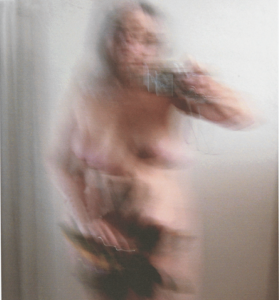
Joan Semmel, Untitled (Fem Folio), 2007, Digital Print, 12 x 12 inches, copyright©Joan Semmel/Artists Rights Society (ARS) New York
Mika Tajima: You Must Be Free
January 22 through March 12, 2022
Kayne Griffin, Los Angeles
From an early investigation into the regulatory and relational structures of human bodies in built environments, Mika Tajima’s recent work extends her inquiry into the conditions of human agency and self-determinacy. This exhibition focuses on the necessity and impossibility of freedom in our contemporary moment. The title, You Must Be Free, appears as an external command to achieve freedom and produces a contradictory tension that reveals a social limit to its practice. The speech act presents freedom as a pressing desire and controlling demand on the subject, underlining the entwinement of control and freedom. The animating force of this paradoxical directive is manifested in this exhibition as air pressure and its circulation through contained and porous objects and architecture.
Brittany Tucker: Burnout
January 8 through February 5, 2022
Steve Turner Gallery, Los Angeles, California
Burnout is a solo exhibition by Vienna-based Brittany Tucker featuring new large-scale loosely rendered paintings, half of which incorporate text that was spray-painted on in a street-tag manner. Tucker’s works of the past few years often juxtaposed a realistic likeness of the artist interacting with cartoon-like characters. In these works, her principal cartoon nemesis of the past, a smiling, often taunting white man, is featured in but one canvas, where he is spilling black paint off the bottom edge of the canvas. Hand prints and foot prints mark the background around him, but Tucker is otherwise absent from the scene. When Tucker’s likeness appears in other works, she appears to be uncomfortable, contorted, or obscured. According to the artist, these works represent her desire to shut out the world’s expectations of a Black female artist and to work more impulsively. As a consequence, they represent an unrestrained portrait of her psychological state as an expat living, working and studying in Vienna in which confusion, sadness, emotional fragility, self-reflection, honesty and ultimately courage and optimism are portrayed.
Joan Semmel: Skin in the Game
October 28, 2021 through April 3, 2022
Pennsylvania Academy of Fine Arts, Philadelphia, Pennsylvania
Joan Semmel: Skin in the Game includes approximately 40 paintings that show the remarkable continuity and assiduity of Semmel’s practice, and focus on four main themes—erotic abstraction; the self; expressive figuration; and photography and painting—that traverse five decades of work and reveal a strong counter narrative to the traditional telling of the history of painting in the United States from the late 1960s to today. Semmel’s work reflects the ongoing struggle for women’s equal representation and power to make decisions about their own bodies and sexuality while centering female empowerment through the self. In Semmel’s own words: “I do not pretend to address the problems of all women in the world. My work is personal and I speak for myself. Women artists have to speak for themselves and then unite to fight the political fight.”
Allison Katz—Artery
January 14 through March 13, 2022
Camden Art Centre, Arkwright Road, London
Attending to the idiosyncratic and eccentric, to personal mythologies and embodied experience, painter Allison Katz treats her own biography as source material, as well as drawing from dream objects, art historical references, and the texture of everyday life. Her exhibition unfolds through a series of biographical anecdotes and moments of synchronicity, opening the world up to a game of allusions, double entendre, slips and wordplay.
Emily: Desert Painter of Australia
January 21 through March 12, 2022
Gagosian, Paris, France
Emily: Desert Painter of Australia is the first solo exhibition in France of the work of Emily Kame Kngwarreye (1910–1996). Emily is unique among Indigenous Australian painters for her rapid and systematic exploration of different styles and for her bold inventiveness with regard to form and color. Over time, her mesmerizing early “dot” paintings ceded to more gestural canvases, reduced in their detail and liberated in their formal qualities. Until her death in 1996, she painted prolifically on both intimate and grand scale, with brushes, sticks, and fingertips on unstretched linen laid flat on the ground, sitting beside or within the composition itself
Laurie Anderson: The Weather
September 24, 2021 through July 31, 2022
Hirshorn Museum and Sculpture Garden, Washington D.C.
Laurie Anderson: The Weather is the largest-ever U.S. exhibition of artwork by celebrated multimedia artist Laurie Anderson. Spanning her groundbreaking video and performance works from the 1970s to recent years, the exhibition guides visitors through an immersive audiovisual experience in the Museum’s second-floor galleries. This dynamic survey showcases the artist’s boundless creative process by highlighting time-based media, including To the Moon (2018), a 15-minute virtual reality work, as well as the largest exhibition of her paintings to date.
Lucy Kim: Skin Might See
January 24 – March 5, 2022
University Gallery, UMASS Lowell
Skin Might See includes the first gallery showing of Kim’s Knife Paintings, as well as work from her Auto-Synthetic series. Kim is a visual artist who uses mold making and illusionistic painting to create hybrid objects that navigate the borderlands between painting and sculpture. She describes mold making and casting as a “sculptural surrogate for photography.” In both bodies of work there is intrigue in the tension between skin and cast surface. Curator Julie Poitras Santos wrote that in Kim’s oeuvre “the surface skin competes for visual primacy with the three dimensional form…“ These startling integuments often seem at odds with the kitchen accoutrements and other structures that lie beneath, creating a frisson and a place of interrogation between media and meaning.
CAA Then & Now: Reflections on the Centennial Book and the Next Century
posted by CAA — November 15, 2021
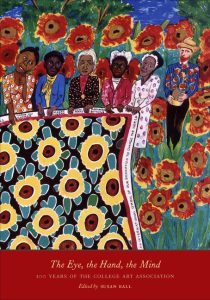
Cover of The Eye, the Hand, the Mind: 100 Years of the College Art Association, edited by Susan Ball (Rutgers, 2011) featuring detail of Faith Ringgold, The Sunflower Quilting Bee at Arles, 1996
On November 4, CAA had the privilege to host the digital event celebrating The Eye, the Hand, the Mind: 100 Years of the College Art Association. If you were unable to make it, please watch this recording of the event.
Published in 2010, this book documents and examines over a century of CAA’s history. The event features Susan Ball, editor of the publication, and author Julia Sienkewicz, who will discuss their contributions to the project and how topics and issues have shifted and changed in the last decade. A conversation between CAA CEO and Executive Director, Meme Omogbai, and art historian, Anne Higonnet, will reflect on these insights and CAA’s plans for the future. This conversation also will honor Robert L. Herbert, the dedicatee of the book, and will discuss how his legacy has impacted the field and so many at CAA.
Following this event, CAA will release a series of short videos from authors discussing their specific chapters within the book, including Julia A. Sienkewicz, Judith Brodsky, Ellen Levy, and Karen Leader. Their presentations will cover a range of topics concerning CAA’s history, from advocacy and feminist initiatives to CAA’s past exhibition programs and conferences.
About the book:
Susan Ball, editor. The Eye, the Hand, the Mind: 100 Years of the College Art Association (Rutgers University Press, 2011). Copies are available for purchase here.
In 1911 the College Art Association began with a small group of college art teachers whose single mission was to promote “art interests in all divisions of American colleges and universities.” One hundred years later the CAA, as it is commonly known, is as diverse as the decades that witnessed its maturity and growth. As leadership and membership grew dynamically, art and art history professors were joined by non-academic visual artists and art historians, museum professionals, art librarians, visual resource curators, independent scholars and artists, collectors, dealers, conservators, and non-college educators.
The Eye, the Hand, the Mind is a collaborative journey, filled with pictorial mementoes and enlivening stories and anecdotes. In these essays readers discover the important role CAA played in major issues in higher education such as curriculum development, preservation of world monuments, workforce issues and market equity, intellectual property and free speech, capturing conflicts and reconciliations inherent among artists and art historians, pedagogical approaches and critical interpretations/interventions as played out in association publications, annual conferences, advocacy efforts, and governance.
Celebrating the centennial of CAA members and milestones, Susan Ball and renowned contributors honor the organization’s complex history which, in part, also represents many learned societies and the humanities over the last one hundred years.
About the speakers:
Susan Ball, Ph.D.: Susan Ball edited The Eye, the Hand, the Mind. Ball holds a Ph.D. in art and architectural history from Yale University and holds over 35 years of professional experience – as a professor, scholar, museum professional and nonprofit agency director. Ball served as Interim Director of Programs at the New York Foundation for the Arts (NYFA). Prior, she was Executive Director at the College Art Association, Professor of Art History at the University of Delaware, the Director of Government and Foundation Affairs at the Art Institute of Chicago, and a consultant with the Shelley and Donald Rubin Foundation. As an author and editor, she has contributed significant works of scholarship in her field, such as The Profitable Artist: A Handbook for All Artists in the Literary, Media, Performing, and Visual Arts with Peter Cobb and Felicity Hogan (Allworth Press, 2011), and has served on many boards.
Julia A. Sienkewicz, PhD: In The Eye, the Hand, the Mind, Sienkewicz authored the chapter, “Uniting the Arts and the Academy: A History of the CAA Annual Conference.” Sienkewicz, an Associate Professor of Art History at Roanoke College, holds both an MA and PhD from the University of Illinois and a BA from Mt. Holyoke College. She is the author of Epic Landscapes: Benjamin Henry Latrobe and the Art of Watercolor (2019). Currently, she is at work on the monograph Forms of White Hegemony: Transnational Sculpture, Racialized Identity, and the Torch of Civilization, 1836-1865, research that has been recognized with the award of a Terra Foundation Fellowship at the American Academy in Rome. She recently edited a special issue of the Art History Pedagogy and Practice journal entitled, “Teaching and Learning the Art History of the United States.” Sienkewicz served in leadership roles at CAA for more than a decade, most recently concluding a term on the Board of Directors as the VP for Committees.
Anne Higonnet, Ph.D.: Anne Higonnet is now Professor of Art History at Barnard College of Columbia University. She received her BA from Harvard College in 1980 and her PhD from Yale University in 1988 under Robert Herbert. Her work has been supported by Getty, Guggenheim, and Social Science Research Council fellowships, as well as by grants from the Mellon, Howard and Kress Foundations. In 2019-2020 she was a Fellow at the Harvard-Radcliffe Institute. She has published many essays, five print books, and two book-scale digital projects, is a prize-winning teacher, and has lectured widely, including in the Live Arts program of the Met Museum. One of her courses, Clothing, is among the most popular at Barnard and Columbia. She is now writing a book under contract with Norton: Three Fashion Stars and the Revolution They Wore; Joséphine Bonaparte, Juliette Récamier, Térésia Tallien.
Meme Omogbai, CAA Executive Director and CEO: Before joining CAA, Omogbai served as a member and past board chair of the New Jersey Historic Trust, one of four landmark entities dedicated to preservation of the state’s historic and cultural heritage, and Montclair State University’s Advisory Board. Named one of 25 Influential Black Women in Business by The Network Journal, Meme has over twenty-five years of experience in corporate, government, higher education, and museum sectors. As the first American of African descent to chair the American Alliance of Museums (AAM), Omogbai led an initiative to rebrand the AAM as a global, inclusive alliance. While COO and trustee, she spearheaded a major transformation in operating performance at the Newark Museum. During her time as deputy assistant chancellor of New Jersey’s Department of Higher Education, Omogbai received legislative acknowledgment and was recognized with the New Jersey Meritorious Service award for her work on college affordability initiatives for families. Omogbai received her MBA from Rutgers University and holds a CPA. She did postgraduate work at Harvard University’s executive management program and has earned the designation of Chartered Global Management Accountant. She studied global museum executive leadership at the J. Paul Getty Trust Museum Leadership Institute, where she also served on the faculty.


